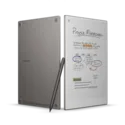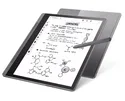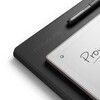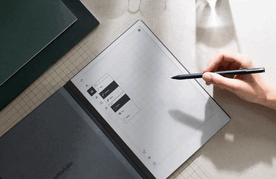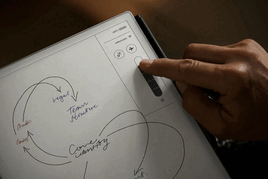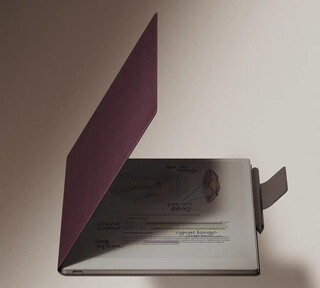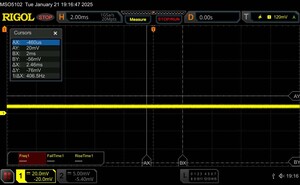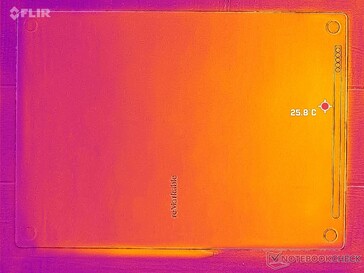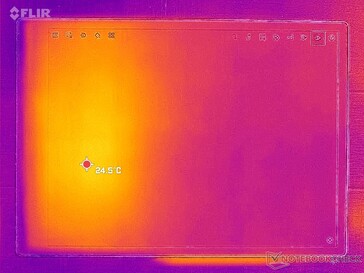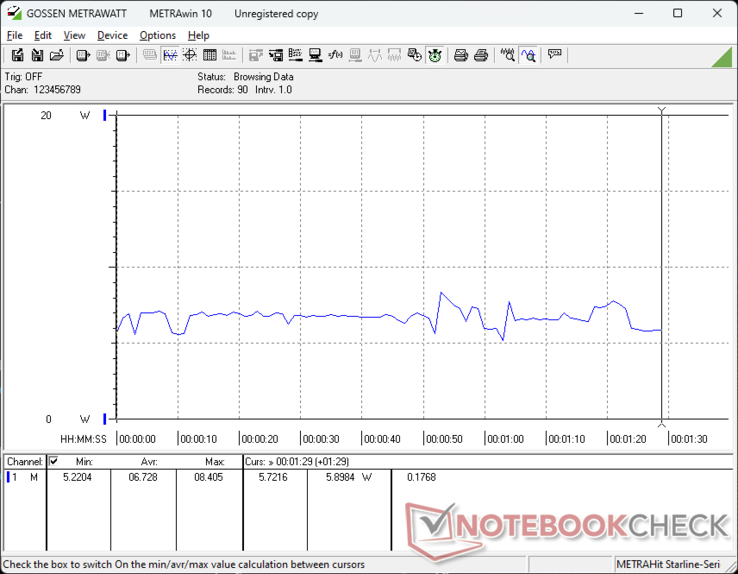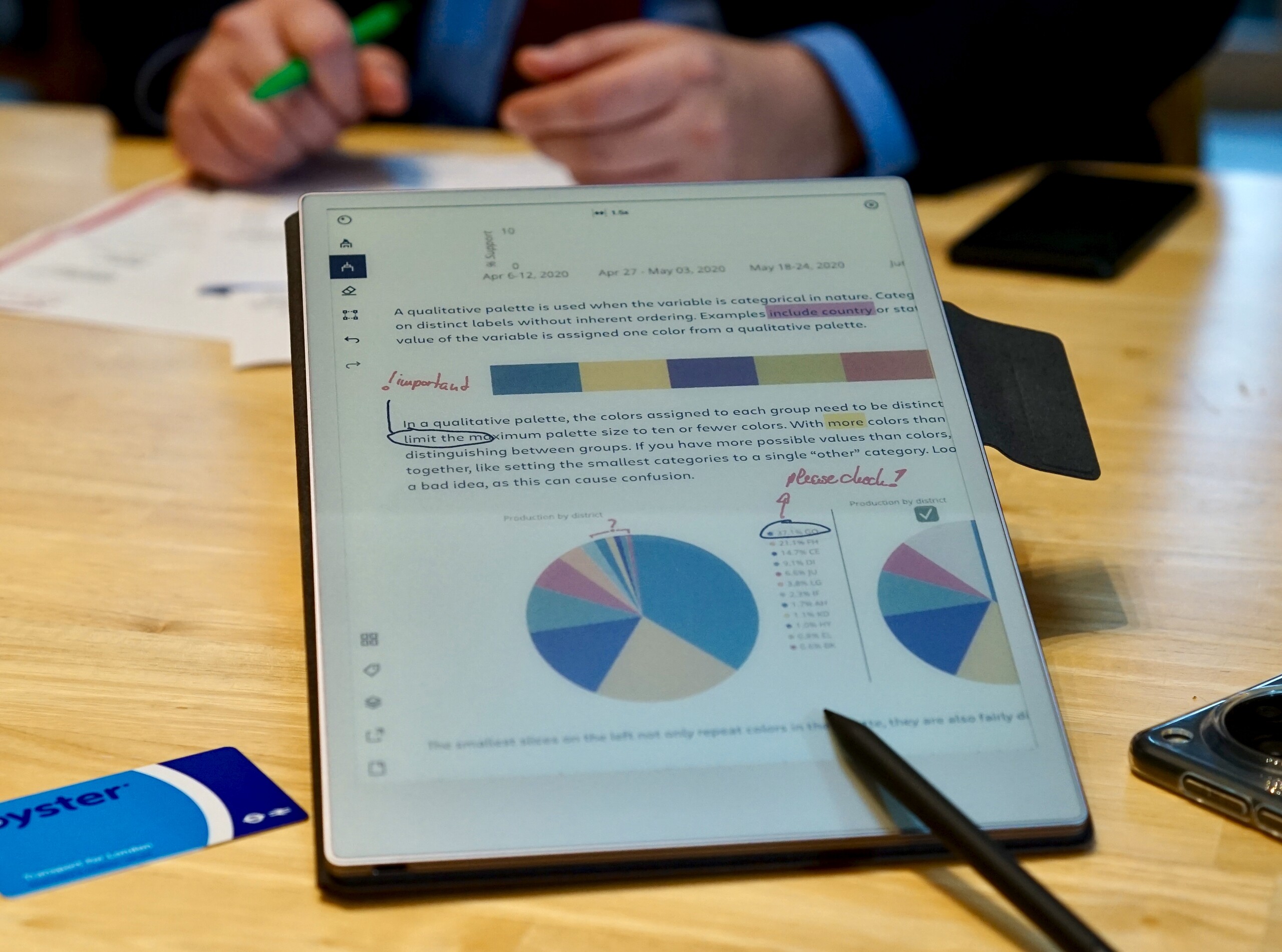
Remarkable Paper Pro review - Stylish, colorful digital notebook for working without distraction
Stay focused!
The Paper Pro from Remarkable is stylish, has a high-quality finish, and is ideal for taking notes, reading, and editing documents. To avoid distraction, that's all the electronic notebook can do. But is that enough to justify a price of almost US$750?Florian Schmitt, 👁 Florian Schmitt, ✓ Anton Avdyushkin (translated by DeepL / Ninh Duy) Published 🇩🇪 🇫🇷 ...
Verdict
If you want to do without paper but like taking notes or need to edit a lot of documents, there is hardly a more sophisticated digital notebook on the market than the Remarkable Paper Pro.
However, the price is very high, especially as the e-ink-based tablet only allows you to read, write, and edit documents: there is no camera, no speakers, no option to add new functions via apps, and no web browser. This means that you won't be distracted from your work. At the same time, you can get an e-ink tablet like the Lenovo Smart Paper for a much lower price. This tablet allows the installation of Android apps, which provides access to numerous additional features.
It is possible to use the Remarkable Paper Pro to read e-books, but you won't necessarily have the most comfortable experience: The software here is slow in parts and offers few options. It is also more challenging to transfer e-books to this tablet compared to other devices.
However, if you are looking for a pure electronic notebook and don't want any bells and whistles, the device offers a great experience: the input pens offer very precise experience, the response time of the screen is fast and there is a comprehensive selection of different writing and drawing tools, which can also be adjusted. The fact that some colors even blur into each other is a great effect, for example.
Thanks to the lighting, the screen can also be used in dark environments. The colors displayed are not as vibrant but are surprisingly varied for an e-ink display. The high-quality accessories, including those from third-party manufacturers, also make the digital notebook enjoyable.
In its special field of application, the Remarkable Paper Pro is a great tool with many possibilities. For all other tasks, however, you need an additional device.
Note: In this case, we have not included a numerical rating, as our automated system cannot adequately represent the Remarkable Paper Pro's special advantages.
Pros
Cons
Price and availability
The Remarkable Paper Pro costs $579 directly from the manufacturer without the folio and with the simple stylus. With the Marker Plus and a Book Folio, the price increases to $779. You can also get a Type Folio with backlit keys and a palmrest for an additional $229 on top of the standard price, or pick a different material for the Book Folio.
On Amazon, the device is available starting from $620 at the time of testing.
Possible competitors in comparison
Image | Model / Review | Price | Weight | Drive | Display |
|---|---|---|---|---|---|
| Remarkable Paper Pro NXP i.MX 8M Mini ⎘ Vivante GC Nano Ultra ⎘ 2 GB Memory, 64 GB eMMC | Amazon: $779.00 List Price: 699€ | 525 g | 64 GB eMMC Flash | 11.80" 2160x1620 229 PPI E-Ink | |
| Lenovo Smart Paper Rockchip RK3566 ⎘ ARM Mali-G52 MP2 ⎘ 4 GB Memory, 64 GB eMMC | Amazon: 1. $18.99 A-10 Smart Paper Pen Repalce... 2. $19.99 A-10 Smart Paper Pen with Er... 3. $25.99 Stylus Pen Compatible with L... List Price: 499€ | 408 g | 64 GB eMMC Flash | 10.30" 1872x1404 227 PPI E-Ink | |
| Huawei MatePad Paper HiSilicon Kirin 820e ⎘ ARM Mali-G57 MP6 ⎘ 4 GB Memory, 64 GB UFS 2.1 | Amazon: 1. $106.56 For Huawei M-Pencil (3rd Gen... 2. $155.44 Chenyn for Honor MatePad Pap... 3. $29.89 atFoliX Screen Protector com... List Price: 499€ | 360 g | 64 GB UFS 2.2 Flash | 10.30" 1872x1404 227 PPI E-Ink | |
| Onyx Boox TabX Qualcomm Snapdragon 662 ⎘ Qualcomm Adreno 610 ⎘ 6 GB Memory, 128 GB UFS 2.1 | Amazon: 1. $9.99 Aircawin for 10.3" Onyx Boox... 2. $14.90 Healing Shield Screen Protec... 3. $32.99 BOZHUORUI Magnetic Case for ... List Price: 950€ | 570 g | 128 GB UFS 2.1 Flash | 13.30" 2200x1650 195 PPI E-Ink Mobius | |
| PocketBook Color Note Allwinner B810 ⎘ PowerVR GE8300 ⎘ 4 GB Memory, 32 GB eMMC | Amazon: $619.99 List Price: 599€ | 390 g | 32 GB eMMC Flash | 10.30" 1872x1404 227 PPI E-Ink |
Table of Contents
- Verdict
- Specifications
- Case and equipment - Very high-quality chassis
- Communication - No Bluetooth
- Software and sustainability - Tidy OS based on Linux
- Operation, e-reading and notes - Can handle small tasks but performs them very well
- Display - Practical format and many colors
- Performance, Emissions and Battery life - No speakers
- Notebookcheck overall rating
Remarkable is known for its electronic notebooks based on an e-ink display.
The Paper Pro is not a direct successor to the Remarkable 2 but offers significant improvements, including color reproduction and an integrated backlight. However, the price is somewhat steep, starting from ~US$600.
The manufacturer is careful not to market the Paper Pro as the "Remarkable 3": The Paper Pro is instead intended to represent the new top-of-the-range model. In contrast, the Remarkable 2 remains the standard model, similar to the relationship between the iPad Air and iPad Pro.
E-Ink alternatives to the Paper Pro are the Onyx Book TabX, the Huawei MatePad Paper, and the Lenovo Smart Paper, to name just a few. However, unlike most of its competitors, the Paper Pro runs on a simpler Linux-based operating system instead of Android.
Specifications
Case and equipment - Very high-quality chassis
The back and sides of the casing are made of metal, while the front is made of special, borderless, matte glass that feels like textured paper when writing with the pen supplied. The distance between the pixel layer and the outer surface layer is just under 1 mm to make writing feel as direct as possible.
The rigidity of the case is excellent, and the device does not twist or creak when handled. If you press the center of the screen with the pen, the surface warps a little, but this would also occur with a normal paper notebook and is therefore not a problem in normal use.
At 525g, the Paper Pro is heavier than some alternatives, such as the smaller Lenovo Smart Paper or the MatePad Paper, and the protective cover adds weight. It is also slightly heavier than an iPad Air, but in return, you get a larger screen closer to the standard A4 format.
With 64 GB, there is plenty of memory for documents and e-books.
The only port available is USB-C for charging and data transfer. Video output is only supported via wireless screen sharing, which requires a Remarkable account.
Unlike the Remarkable 2, the connector pins for accessories are located on the back of the Paper Pro. Therefore, Paper Pro accessories are incompatible with the Remarkable 2 and vice versa.
Communication - No Bluetooth
Wi-Fi 5 is supported, but Bluetooth is not.
Since there is no web browser, the Wi-Fi connection is primarily used for cloud synchronization, software updates, screen sharing, and sending files via email.
The lack of a web browser is also the reason why we cannot measure the transfer speeds.
Software and sustainability - Tidy OS based on Linux
The software is a key differentiator between the Paper Pro and most other e-readers: there is no Android, but instead, Linux-based software is installed. Those who concentrate on reading and taking notes will be satisfied with the very reduced user interface.
Anyone expecting more, however, will have to look elsewhere: Remarkable users do not get functions such as a web browser, the ability to install other readers and apps, or support for many file formats - the tablet concentrates entirely on its core tasks.
Although there are hacks and utilities on the Internet to add functions and make changes, these involve extensive changes to the software and are only recommended for experienced users.
File support remains the same as for Remarkable 2; files should be available as PDF or ePUB if possible. Opening Word and PPT files requires additional steps on the PC, while JPEG and PNG files are automatically converted to PDF files.
Presentations in PDF format can be sent from the Remarkable via Screen Share to projectors or screens that support this function.
The manufacturer offers a relatively long software promise: 5 years after the end of sales in its own web store, the devices should still receive updates. In addition, the security risk should be relatively low due to the proprietary system.
Remarkable provides comprehensive information on its website about the sustainability of its products: The CO2 footprint of the Paper Pro is 58 kg, 82% of which comes from the electrical energy consumed in the production process. The manufacturer also states that around 74% of the device is recyclable.
Recycled materials, such as the cobalt in the battery or the polyester for the folios, are also used. However, the device is not really easy for the user to repair. Remarkable does not offer direct repairs for broken devices outside of the warranty; instead, refurbished devices can be purchased at reduced prices.
Operation, e-reading and notes - Can handle small tasks but performs them very well
The primary function of the Remarkable tablet is to read, write, and edit text. While the buttons can also be operated with your fingers, you need a stylus to write or draw: there is a standard pen included for free with the device or a higher-quality stylus with an included eraser for an extra $50. Both give you a very fine and very immediate writing experience. If you tilt the stylus, you can hatch. Colors become more or less intense depending on the pressure applied and even mix depending on the drawing tool selected.
The user interface is easy to learn and has large icons, but one problem typical of e-ink remains: although the screen is fast, it is not quite as direct as a typical smartphone or iPad. This disadvantage can be particularly annoying for fast writers, as the software cannot always keep up with the frequent changes between different colors, pen styles, and pages.
In addition, the integrated "Convert to text" function is unreliable with cursive writing and mathematical formulas. If you want to use this function frequently, you should definitely write large and with thick lines.
The Type Folio also comes with a keyboard cover, making writing long texts much easier.
If you also want to use the Remarkable Paper Pro to read e-books, you must first get the files onto the device. To do this, you have to open a browser window when connecting the tablet to the PC or use the upload to the cloud. Of course, this is not quite as convenient as using Windows Explorer or directly via the apps of your preferred provider, which you can install on Android devices.
Documents and eBooks are always opened in the note app. You can create your own layers for annotations and comments, mark text passages, and more. This all works quite well. However, there are sometimes fewer options for actually reading the documents than with other reader programs: You can only select a few fonts, for example, and the text display can only be regulated with six font sizes and three line spacings.
Display - Practical format and many colors
The 11.8-inch display has a 4:3 format, which is well-suited for documents. The resolution of 2,160 x 1,620 pixels is quite high and does not drop when displaying colors. This means that the display always looks fine.
A special feature of the E-Ink display in the Remarkable Paper Pro is the ink particles in three primary colors and white per pixel. These are mixed to produce red, green, and blue secondary colors. Together with black, this results in 8 color tones that the display can show natively. Additional color values can be generated by dithering.
In practice, some colors definitely appear more vivid than others. Blue, for example, looks almost like black unless the backlight is set to maximum. Nevertheless, the quality of the colors in terms of saturation and display is comparable to that of a newspaper. The colors are particularly useful for notes when they are combined with layers: this allows you to annotate, correct, underline, or write over existing text.
The backlight is a good addition, but it doesn't get really bright on the Remarkable Paper Pro: the manufacturer calls it "Glow Light" and in our test with the spectrophotometer we measured a maximum brightness of around 4 cd/m². This is very low when you look at comparable e-ink readers. However, it is enough to be able to read the display in dark environments without any problems. The color temperature is neutral white, a warmer backlight is unfortunately not possible.
Although the tablet supports automatic rotation of the screen content, this function is deactivated: according to the manufacturer, the Paper Pro is designed to be used in portrait mode. Remarkable says that auto-rotation could be included in a future update, depending on demand and user feedback.
| |||||||||||||||||||||||||
Center on Battery: 4 cd/m²
Contrast: ∞:1 (Black: 0 cd/m²)
| Remarkable Paper Pro E-Ink, 2160x1620, 11.8" | Lenovo Smart Paper E-Ink, 1872x1404, 10.3" | Huawei MatePad Paper E-Ink, 1872x1404, 10.3" | Onyx Boox TabX E-Ink Mobius, 2200x1650, 13.3" | PocketBook Color Note E-Ink, 1872x1404, 10.3" | |
|---|---|---|---|---|---|
| Screen | 2725% | 1448% | 1525% | 2725% | |
| Brightness middle (cd/m²) | 4 | 113 2725% | 61.9 1448% | 65 1525% | 113 2725% |
| Black Level * (cd/m²) | |||||
| Brightness (cd/m²) | 106 | 60 | 67 | 111 | |
| Brightness Distribution (%) | 83 | 80 | 63 | 93 | |
| Greyscale dE 2000 * | 9.9 | 9.1 | 15.2 | ||
| Gamma | 1.371 160% | 2.02 109% | 1.157 190% | ||
| CCT | 7116 91% | 6848 95% | 8312 78% |
* ... smaller is better
Screen Flickering / PWM (Pulse-Width Modulation)
| Screen flickering / PWM not detected | |||
In comparison: 53 % of all tested devices do not use PWM to dim the display. If PWM was detected, an average of 8111 (minimum: 5 - maximum: 343500) Hz was measured. | |||
Performance, Emissions and Battery life - No speakers
The Remarkable Paper Pro uses an NXP iMX8 Min SoC with four cores and a clock speed of up to 1.8 GHz. Unfortunately, performance benchmarks are not possible due to the Linux system. Compared to mid-range SoCs installed in other devices, such as the Onyx Boox Tab X or the Huawei MatePad Paper, and offer significantly more (and more modern) computing cores, the performance is likely to be modest.
However, this is not so tragic in this case, as the Remarkable tablet is mainly used for taking notes and can hardly be used for anything else anyway. And this usually works smoothly, with loading times only being a little longer from time to time for elaborately designed documents with large graphics.
There is no need to worry about high temperatures under load; we measured temperatures below 30 °C, even after long periods of use.
The Remarkable Paper Pro does not have speakers, so it is not possible to play audio books or have texts read aloud. There is also no Bluetooth, so external audio devices cannot be connected.
The power consumption during operation is relatively high at an average of 6.7 watts with maximum screen brightness. On the other hand, the Remarkable Paper Pro has a generous battery with 5,030 mAh. We can operate the tablet for around 20 hours with Wi-Fi switched on, minimal lighting, and regular page changes. The tablet can be charged with almost any USB charger; a full charge takes just over 2 hours.
(+) The maximum temperature on the upper side is 27.9 °C / 82 F, compared to the average of 33.7 °C / 93 F, ranging from 20.7 to 53.2 °C for the class Tablet.
(+) The bottom heats up to a maximum of 26.8 °C / 80 F, compared to the average of 33.2 °C / 92 F
(+) In idle usage, the average temperature for the upper side is 24.9 °C / 77 F, compared to the device average of 30 °C / 86 F.
| Remarkable Paper Pro 5030 mAh | Lenovo Smart Paper 3500 mAh | Huawei MatePad Paper 3625 mAh | Onyx Boox TabX 6300 mAh | PocketBook Color Note 4000 mAh | |
|---|---|---|---|---|---|
| Battery runtime | -12% | -19% | 24% | -7% | |
| Reader / Idle (h) | 20 | 17.6 -12% | 16.1 -19% | 24.8 24% | 18.6 -7% |
| Load (h) | 4.6 | 4.2 |
Notebookcheck overall rating

The Remarkable Paper Pro is not exactly cheap. It is certainly a very special tool for anyone who wants to do without actual paper but still wants to make notes and annotations in texts conveniently.
Apart from that, it has virtually no functions but is equipped with an elegant casing, plenty of memory, and a comparatively responsive and colorful e-ink display.
Transparency
The selection of devices to be reviewed is made by our editorial team. The test sample was given to the author by the manufacturer free of charge for the purposes of review. There was no third-party influence on this review, nor did the manufacturer receive a copy of this review before publication. There was no obligation to publish this review. As an independent media company, Notebookcheck is not subjected to the authority of manufacturers, retailers or publishers.
This is how Notebookcheck is testing
Every year, Notebookcheck independently reviews hundreds of laptops and smartphones using standardized procedures to ensure that all results are comparable. We have continuously developed our test methods for around 20 years and set industry standards in the process. In our test labs, high-quality measuring equipment is utilized by experienced technicians and editors. These tests involve a multi-stage validation process. Our complex rating system is based on hundreds of well-founded measurements and benchmarks, which maintains objectivity. Further information on our test methods can be found here.




